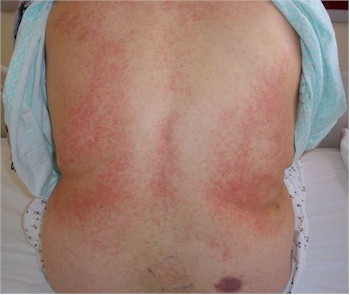Thrombocytopenia Causes, Symptoms, Diagnosis and Treatment

What is Thrombocytopenia?
Thrombocytopenia is a condition in which you have a low blood platelet count. Platelets (thrombocytes) are colorless blood cells that help blood clot. Platelets stop bleeding by clumping and forming plugs in blood vessel injuries.
A normal platelet count in adults ranges from 150,000 to 450,000 platelets per microliter of blood. A platelet count of less than 150,000 platelets per microliter is lower than normal. If your blood platelet count falls below normal, you have thrombocytopenia.
Causes of Thrombocytopenia
Many factors can cause a thrombocytopenia, such as:
- The body’s bone marrow doesn’t make enough platelets.
- The bone marrow makes enough platelets, but the body destroys them or uses them up.
- The spleen holds on to too many platelets. The spleen is an organ that normally stores about one-third of the body’s platelets. It also helps your body fight infection and remove unwanted cell material.
- A combination of the above factors.
Symptoms of Thrombocytopenia
Symptoms and signs of thrombocytopenia may include:
- Superficial bleeding into the skin resulting in small reddish spots (petechiae)
- Fatigue
- Easy or excessive bruising (purpura)
- Prolonged bleeding cuts
- Spontaneous bleeding from the gums or nose
- Jaundice
- Heavy menstrual bleeding that’s unusual for the individual
- Blood in the urine or stools
- Enlarged spleen
- Bleeding that will not stop
- DVT (deep vein thrombosis
Diagnosis of Thrombocytopenia
The following tests may be done:
- Complete blood count (CBC)
- Blood clotting tests (PTT and PT)
Other tests that may help diagnose this condition include bone marrow aspiration or biopsy.
Treatment of Thrombocytopenia
Some people develop severe or long-term (chronic) thrombocytopenia. Depending on what’s causing your low platelet count, treatments may include:
- Treating the underlying cause of thrombocytopenia. If your doctor can identify a condition or a medication that’s causing your thrombocytopenia, addressing that cause may clear up your thrombocytopenia
For example, if you have heparin-induced thrombocytopenia, your doctor will direct you to stop using heparin and prescribe a different blood-thinning drug. Your thrombocytopenia may persist for a week or more despite stopping all heparin therapy. - Blood or platelet transfusions. If your platelet level becomes too low, your doctor can replace lost blood with transfusions of packed red blood cells or platelets.
- Medications. If your condition is related to an immune system problem, your doctor may prescribe drugs to boost your platelet count. The first-choice drug may be a corticosteroid. If that doesn’t work, he or she may try stronger medications to suppress your immune system.
- Surgery. If other treatment options don’t help, your doctor may recommend surgery to remove your spleen (splenectomy).
- Plasma exchange. Thrombotic thrombocytopenic purpura can result in a medical emergency requiring plasma exchange.
Related Articles:
Melasma Causes, Symptoms, Diagnosis and Treatment
Oedema Causes, Symptoms, Diagnosis and Treatment
Tinea Pedis Causes, Symptoms, Diagnosis and Treatment
Tinea Faciei Causes, Symptoms, Diagnosis and Treatment
Thrombophlebitis Causes, Symptoms, Diagnosis and Treatment
Torticollis Causes, Symptoms, Diagnosis and Treatment
Eczema Causes, Symptoms, Diagnosis and Treatment
Toxic Shock Syndrome Causes, Symptoms, Diagnosis and Treatment
Tarsal Cyst Causes, Symptoms, Diagnosis and Treatment
By : Natural Health News




